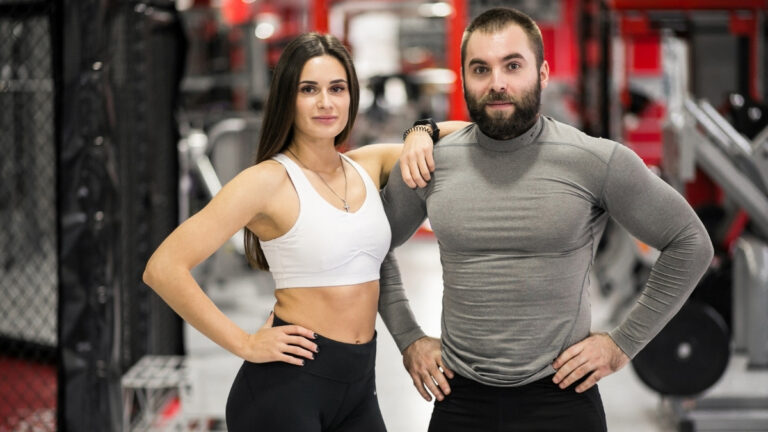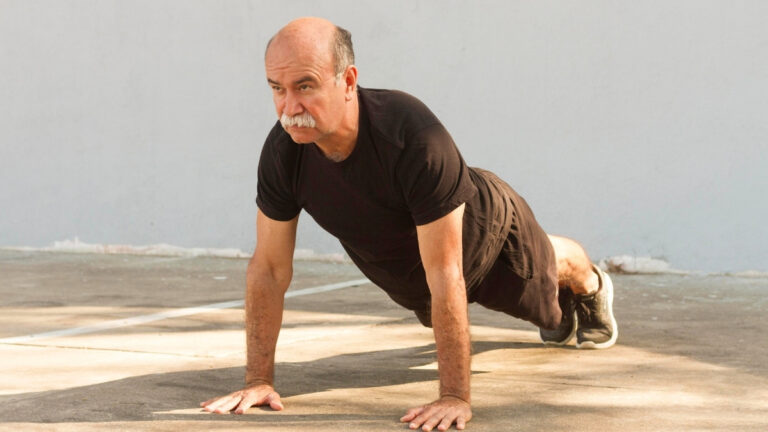Japanese Researchers Reveal the Most Important Exercise for Aging Muscles

Muscle power declines three times faster than muscle mass as you age—and most people are training the wrong way to stop it.
You’ve noticed the changes. Getting up from low chairs takes more effort. Stairs feel harder. You worry about falling and losing your independence. Maybe you’re already doing traditional slow-speed exercises, but you’re still losing function. You’re confused about what type of exercise actually works for aging muscles.
Here’s the truth: resistance training for older adults needs to focus on power, not just strength. This guide shows you why power training is superior to traditional strength training.
You’ll learn the science behind muscle power decline and how to reverse it. You’ll get specific exercises you can start today at home. And you’ll discover how to safely progress from beginner to advanced, even if sarcopenia has already started affecting your daily life.

The answer isn’t working harder. It’s working smarter with the right type of movement.
The Groundbreaking Discovery About Aging Muscles
For decades, doctors told older adults to “stay active” and “build muscle.” But they missed something critical. New research from Japan reveals that the type of muscle fitness you build matters far more than the amount.

In 2025, the Asian Working Group for Sarcopenia changed everything. They stopped focusing only on muscle size. Instead, they shifted to something called “muscle health.” This includes how fast your muscles work, not just how big they are.
Here’s the shocking part: your muscle power drops three times faster than your muscle mass as you age. Each year after 60, you lose about 3% of your power, 2% of your strength, and only 1% of your muscle size. This explains why you might look relatively fit but struggle to stand up from a low chair.
Researchers at Tohoku University found that just 30 to 60 minutes of muscle-strengthening exercise per week cut death risk by 10-20%. That’s less than 10 minutes per day. And people with low muscle power faced 2-3 times more mobility problems than those with just low strength.
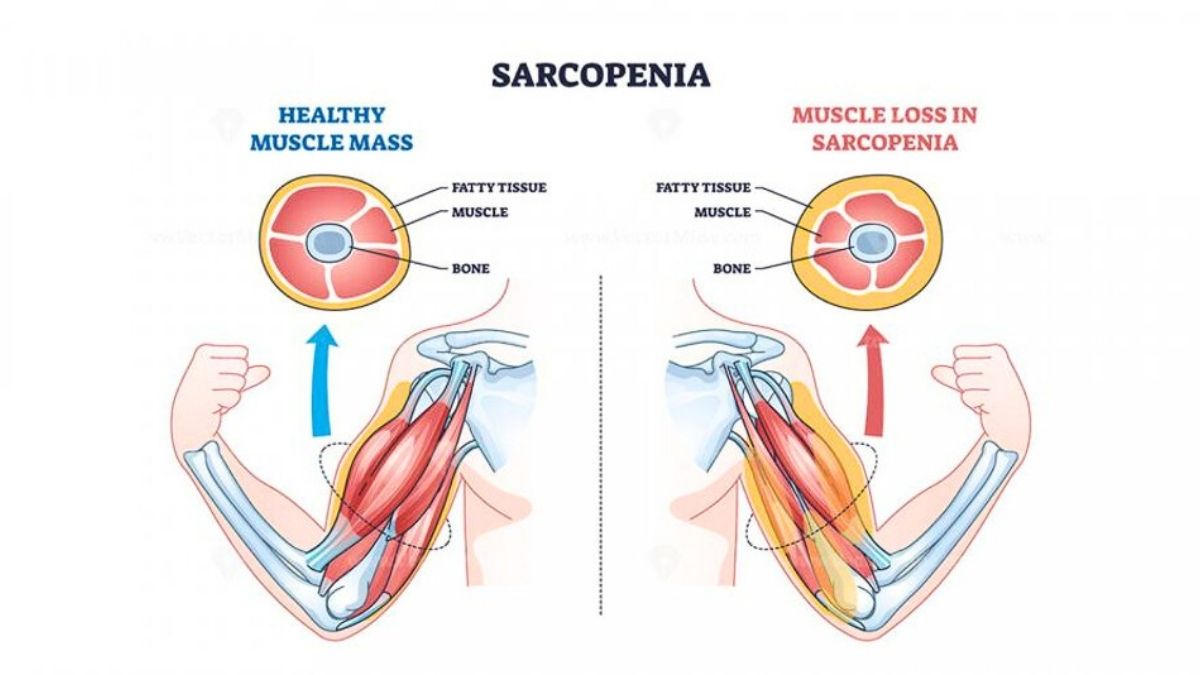
The difference between mass, strength, and power matters. Mass is size. Strength is how much you can lift slowly. Power is how fast you can move that weight. When you trip on a rug, you need explosive power in under one second to catch yourself.
What Makes Power Training Different (And Better)
Power training sounds complicated. It’s not. Here’s the simple formula: Power = force × velocity. That means you lift weight and move it fast. Traditional strength training makes you lift slowly. Power training adds speed.
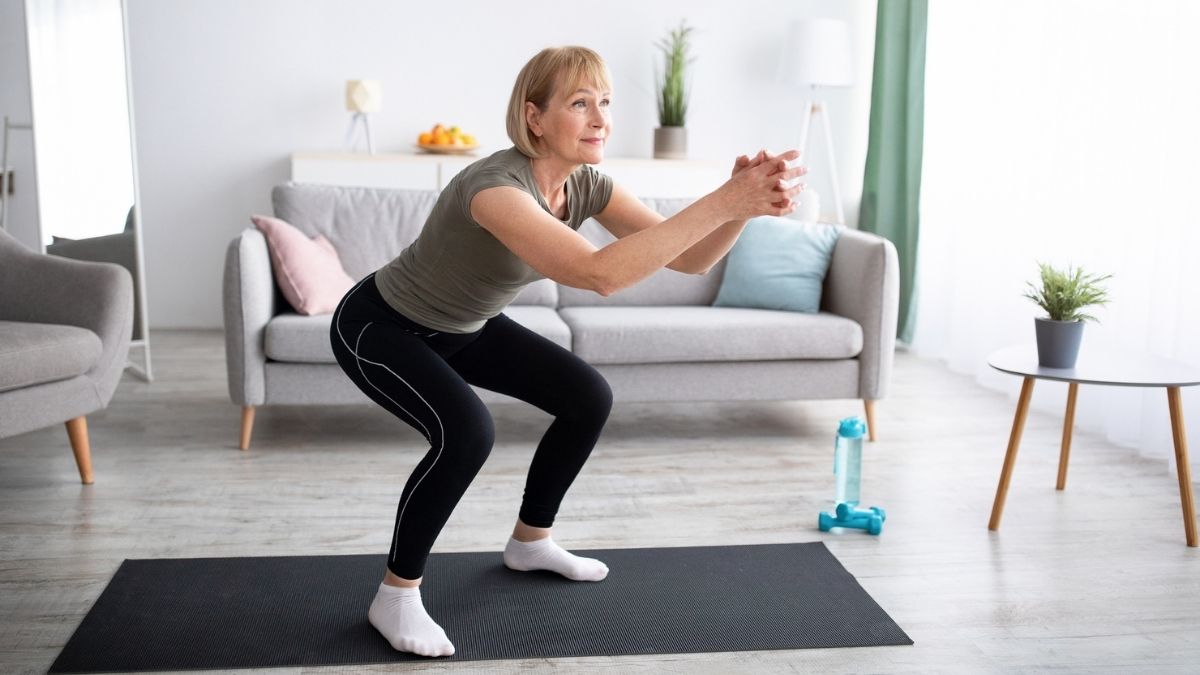
Research proves power training beats slow strength training for daily tasks. Studies compared older adults doing both types. The power training group got better at standing from chairs, walking faster, and keeping balance. These are the movements that keep you independent.
Think about your daily life. Getting up from a low chair before you lose balance requires quick force. Catching yourself when you stumble gives you less than one second. Carrying groceries upstairs needs explosive leg power. Crossing the street before the light changes demands fast movement. Strength alone won’t save you in these moments.
Here’s why this works. Fast movements train your fast-twitch muscle fibers. These fibers generate quick, powerful bursts. You lose these fibers faster than any other muscle type as you age. Slow training doesn’t wake them up. Explosive movement does. Your nervous system learns to fire muscles rapidly, which builds functional fitness for real life.
The Science: Why Traditional Workouts Aren’t Enough
Traditional slow-speed training builds strength but misses speed. Your muscles get stronger, but they don’t learn to fire quickly. That’s the problem when you need to catch yourself from falling.

High-speed power training changes your muscle architecture differently. It trains your muscles to generate force fast—what scientists call rate of force development. This is critical for fall prevention. One study showed that fast-speed exercise improved muscle power, volume, and structure more than slow training.
Here’s the good news. Heavy resistance training can reverse decades of age-related decline in both strength and explosive power. One year of training helped people maintain leg strength for up to four years later. But you need the speed component. Aerobic exercise like walking helps your heart but doesn’t stop fast-twitch muscle loss or build the explosive power you need for daily safety.
The 3-Phase Power Training System for Older Adults

The biggest mistake is moving fast before you move well. This progressive resistance system keeps you safe while building real power.
Phase 1 (Weeks 1-4): Build Your Foundation Start with controlled movements. Do 2-3 sessions per week. Perform 2 sets of 10-12 reps for each exercise. Take 60-90 seconds rest between sets. Focus on perfect form at a slow, steady pace. Count to 3 going up, count to 3 going down.
Phase 2 (Weeks 5-8): Add Speed Keep the same training protocol but change the tempo. Now lift in 1-2 seconds instead of 3. Lower slowly for control. Do 2-3 sets of 8-10 reps. Rest 90 seconds between sets. This teaches your muscles to contract faster while maintaining safe training form.
Phase 3 (Week 9+): Full Power Explode upward as fast as you safely can. Lower with control in 2-3 seconds. Do 3 sets of 6-8 reps with full intensity. Rest 2 minutes between sets to fully recover. This is true power training.
Progress when you can complete all reps with good form for two straight sessions. Listen to your body. Joint pain means slow down. Muscle fatigue is normal. Skip speed if you feel unstable. You can always repeat a phase before moving forward. Consistency beats rushing through exercise progression.
8 Essential Power Training Exercises You Can Do at Home
These chair exercises and bodyweight training moves build power without a gym. Start with exercises 1-4, then add the rest as you get stronger.
1. Chair Sit-to-Stands (Power Squats)
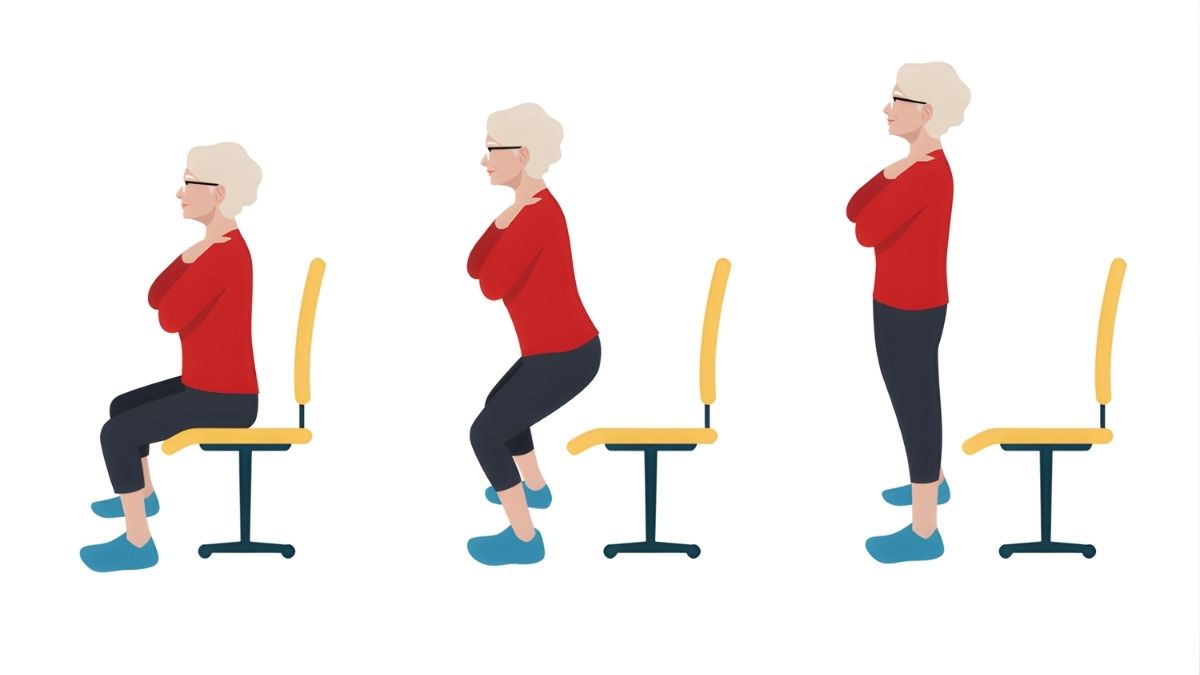
Targets: Thighs, glutes, core Sit in a sturdy chair with feet flat. Cross arms over chest. In Phase 1, stand up slowly over 3 seconds.
Phase 2, stand up in 1-2 seconds.
Phase 3, explode upward as fast as safely possible while maintaining control. Lower slowly each time.
Mistake to avoid: Leaning too far forward. Keep chest up. Easier version: Use armrests for help. Harder version: Hold a water bottle at your chest.
2. Seated Leg Extensions
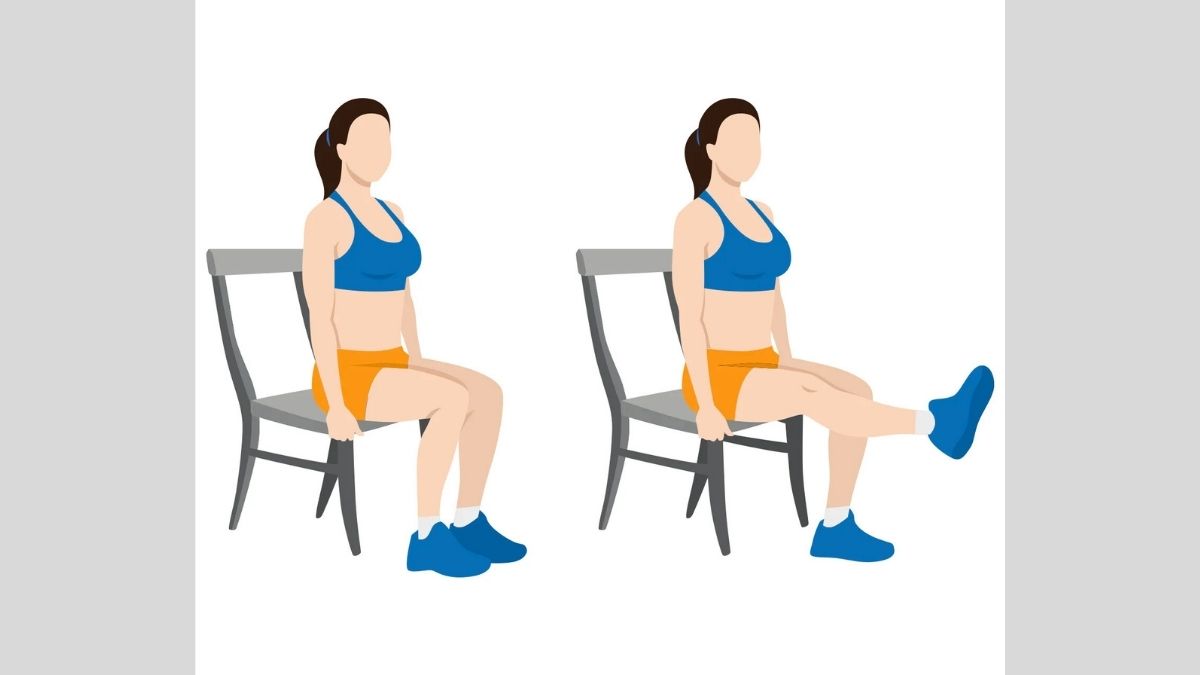
Targets: Front thighs Sit at the edge of your chair. Extend one leg straight out.
Phase 1, lift slowly.
Phase 2, kick out in 1 second.
Phase 3, snap your leg straight fast, then lower with control.
Mistake to avoid: Locking your knee hard. Stop just before full extension. Easier version: Do smaller movements. Harder version: Add an ankle weight or resistance band.
3. Explosive Calf Raises

Targets: Calves, ankles Stand behind your chair, holding the back for balance. Rise onto your toes.
Phase 1, lift slowly.
Phase 2, push up in 1 second.
Phase 3, explode upward like you’re jumping, but keep toes on the ground.
Mistake to avoid: Rolling to the outside of your feet. Easier version: Do one foot at a time. Harder version: Do single-leg raises.
4. Wall Push-Offs
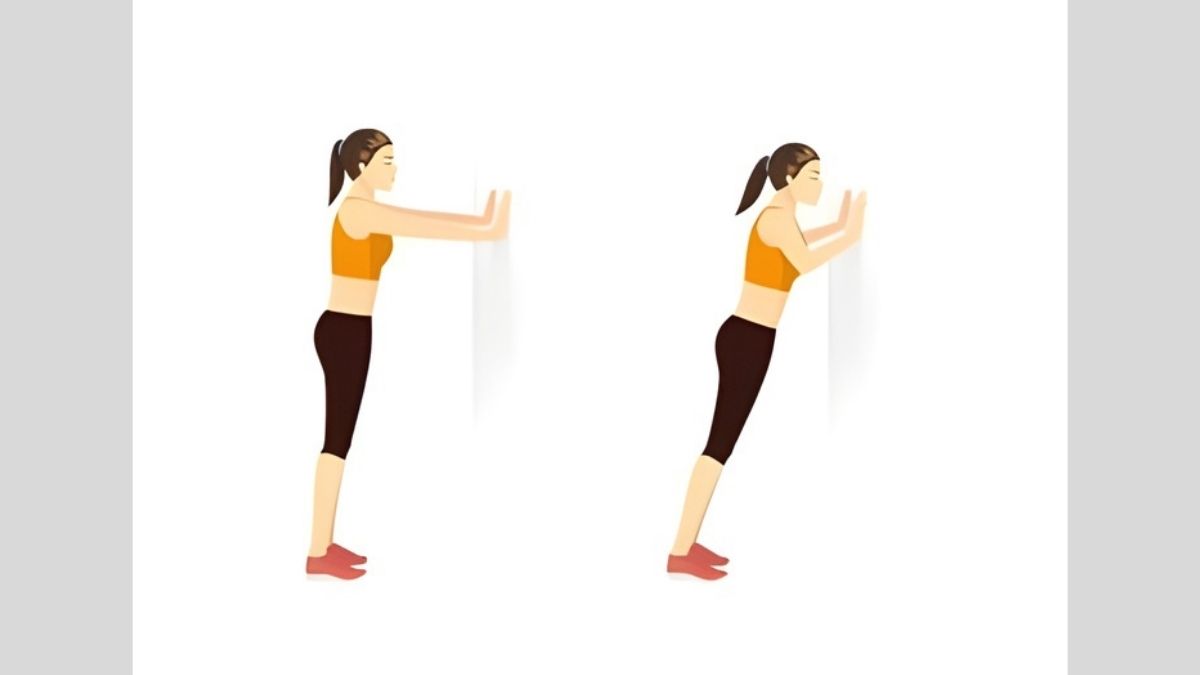
Targets: Chest, shoulders, arms Stand arm’s length from a wall. Place hands flat on the wall at shoulder height.
Phase 1, do slow push-ups against the wall.
Phase 2, push away in 1 second.
Phase 3, push so hard your hands briefly leave the wall.
Mistake to avoid: Letting your lower back sag. Easier version: Stand closer to the wall. Harder version: Step further back.
5. Chair Step-Ups
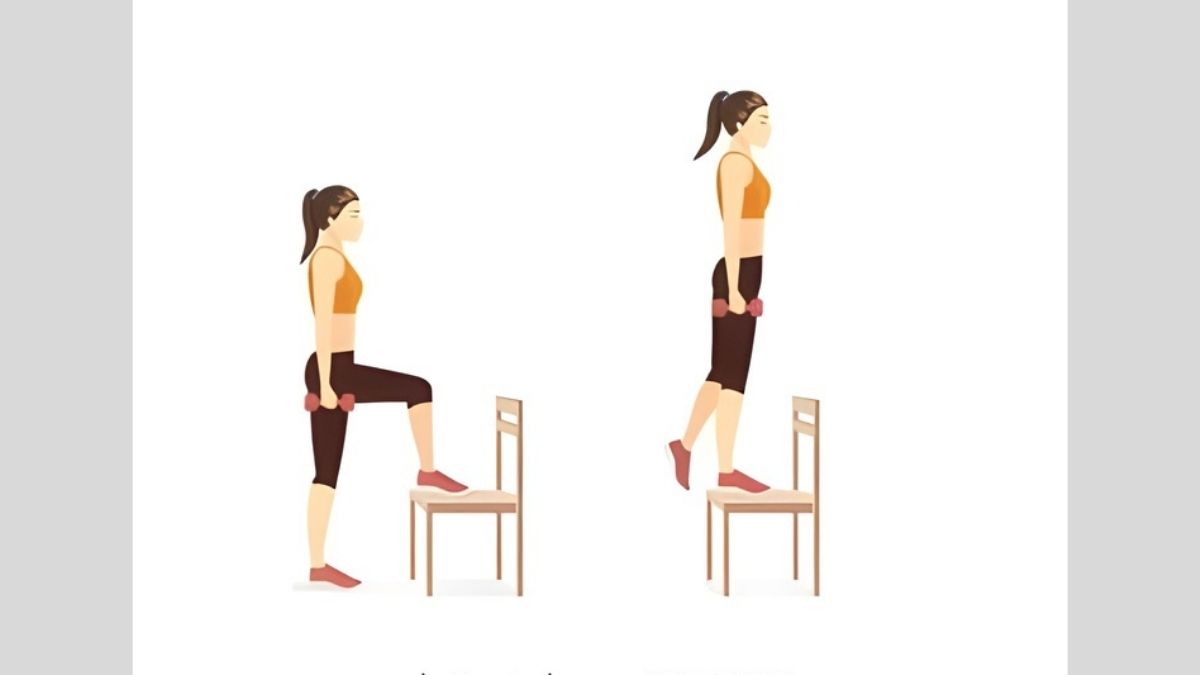
Targets: Thighs, glutes, balance Use a sturdy, low step or bottom stair. Place one foot on the step.
Phase 1, step up slowly.
Phase 2, step up in 1 second.
Phase 3, drive up powerfully. Step down with control.
Mistake to avoid: Pushing off with your back foot. Let the front leg do the work. Add speed in Phase 2 or later, not before.
6. Seated Leg Press with Resistance Band
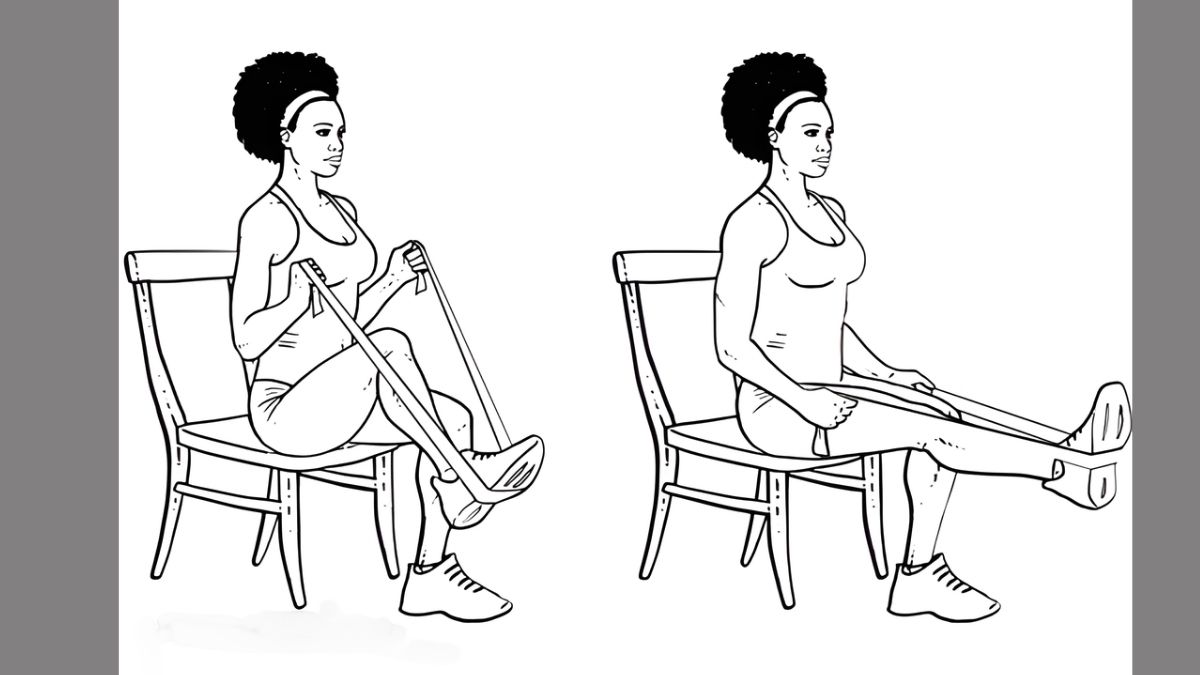
Targets: Thighs, hips Sit in a chair. Loop a resistance band around one foot, holding the ends. Push your foot forward.
Phase 1, press slowly.
Phase 2, press in 1 second.
Phase 3, push fast like you’re kicking.
Mistake to avoid: Arching your back off the chair. This home workout builds serious leg power.
7. Quick Knee Lifts (Marching)

Targets: Hip flexors, core, balance Stand holding your chair back. Lift one knee high. In Phase 1, march slowly.
Phase 2, lift each knee in 1 second.
Phase 3, pop each knee up fast.
Mistake to avoid: Leaning backward. Stay tall. Easier version: Lift knees lower.
8. Standing Row Pulls with Resistance Band
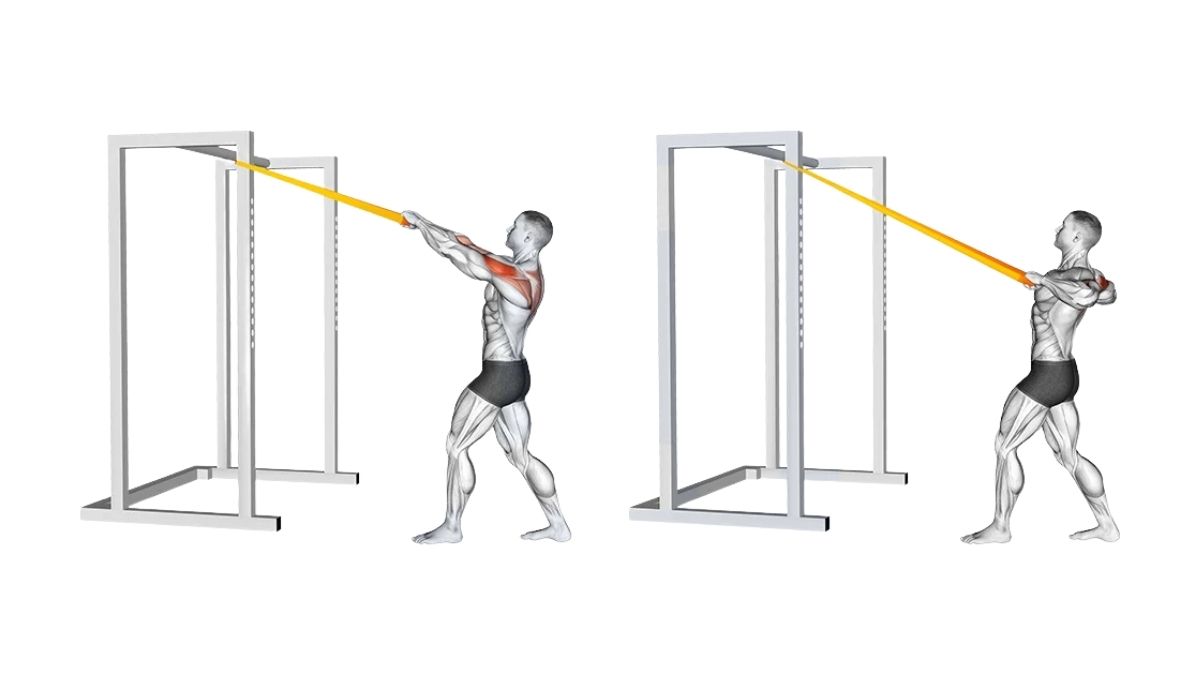
Targets: Back, shoulders, arms Loop a resistance band around a doorknob. Hold both ends. Step back until there’s tension. Pull elbows back.
Phase 1, pull slowly.
Phase 2, pull in 1 second.
Phase 3, yank back fast, then release slowly.
Mistake to avoid: Shrugging shoulders up. Keep them down. These resistance bands exercises complete your upper body power training.
How to Structure Your Weekly Power Training Routine
Your training frequency should be 2-3 times per week with at least one rest day between sessions. Research shows programs lasting 8-12 weeks work best, with each workout taking 30-45 minutes including warm-up and cool-down.
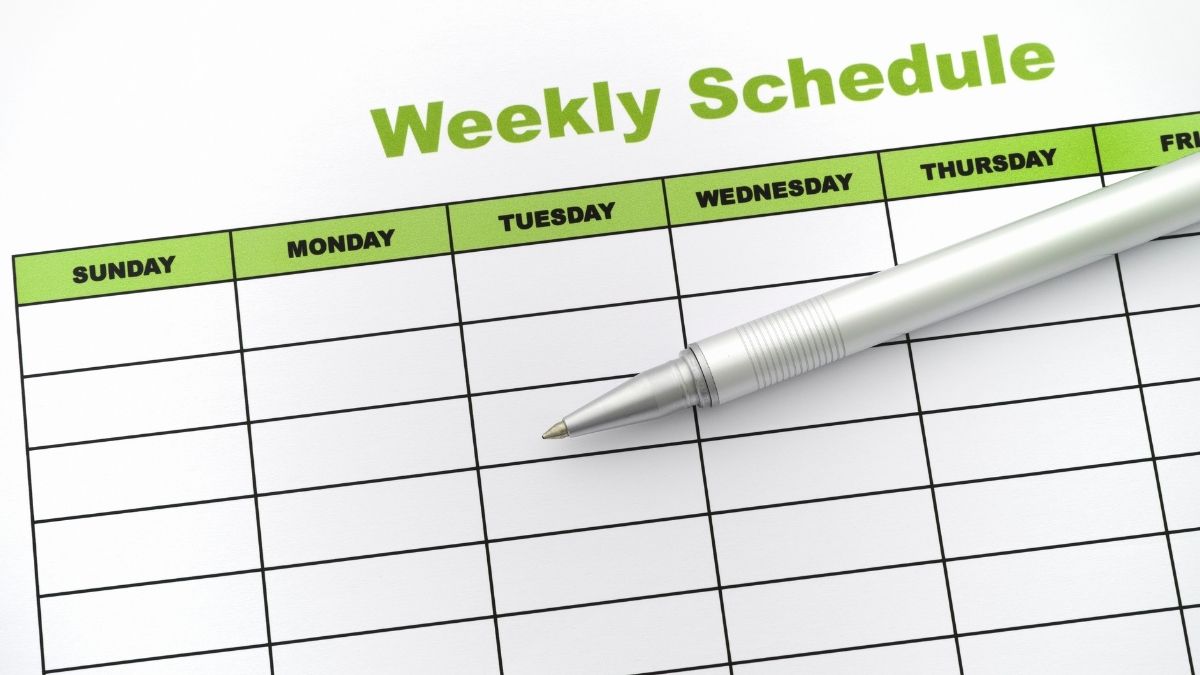
Beginner Schedule (Weeks 1-4) Monday: Chair sit-to-stands, seated leg extensions, calf raises, wall push-offs Thursday: All four exercises again Saturday: Optional light walk
Intermediate Schedule (Weeks 5-12) Monday: Exercises 1-4 with added speed Wednesday: Exercises 5-8 Friday: Full routine (all 8 exercises)
Each exercise routine starts with a 5-minute warm-up. March in place, do arm circles, and gentle stretches. End with 5 minutes of stretching while muscles are warm. This workout schedule gives your muscles proper recovery time between sessions. Rest days aren’t optional—they’re when your muscles actually get stronger.
Take Action Today
Power training is more effective than traditional strength training for maintaining function after 60. The 3-phase progression system makes it safe for anyone to start. Combining exercise with proper nutrition yields best results. Consistency matters more than perfection.

Start with Phase 1 this week. Do 2-3 sessions of the basic exercises, focusing on form. In 4 weeks, you’ll be ready to add speed. In 12 weeks, you’ll notice real changes in how you move through life.
Power training for aging muscles isn’t just about living longer—it’s about living stronger, maintaining independence, and preventing the functional decline that often comes with aging.


